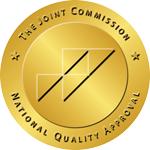Key Takeaway:
- Establishing a sober home is important in creating a supportive environment for a loved one returning home after addiction treatment. This includes developing a plan for monitoring sobriety, removing triggers from the home environment, and creating a supportive home atmosphere.
- Setting healthy boundaries is essential for maintaining sobriety. This involves identifying and practicing healthy boundaries, discussing expectations for sobriety, and establishing consequences for relapse and boundaries around them.
- Developing a support system is crucial for continued success in recovery. This includes connecting with support groups and meetings, utilizing resources such as professional help, and seeking support from family and friends.
- Maintaining a positive attitude is key to supporting a loved one in recovery. This involves focusing on the positive aspects of recovery, being patient and understanding of the recovery process, and celebrating successes along the way.
- Managing stress and anxiety is important in preventing relapse. This includes identifying and managing stress triggers, establishing healthy coping mechanisms for stressful situations, and prioritizing self-care to reduce stress and promote overall wellbeing.
Ready to welcome your loved one back home after addiction treatment? You need to create a supportive environment for their recovery. This article will help you understand the challenges and provide helpful tips on creating the best environment for success.
Establishing a Sober Home
As loved ones prepare for their return home after addiction treatment, it’s essential to establish a safe and supportive living environment that promotes their sobriety. In this section, we’ll take a closer look at how to create a sober home, including developing a plan for monitoring sobriety and removing triggers from the home environment. We’ll also explore strategies for creating a supportive home atmosphere that encourages continued sobriety. According to the National Institute on Drug Abuse, a stable and substance-free home environment is a key factor in preventing relapse in those recovering from addiction. Let’s get started on creating a plan for a successful transition home.
Developing a Plan for Monitoring Sobriety
Developing a Plan for Monitoring Sobriety can be a vital step in creating a supportive environment for your loved one’s return home after addiction treatment. The plan will be unique to the individual and should take into account their history of substance abuse, triggers, and relapse prevention strategies.
Here’s a 6-step guide to developing a plan for monitoring sobriety:
- Identify potential triggers and high-risk situations that may lead to relapse.
- Decide on the frequency and method of drug testing or alcohol breathalyzer tests.
- Establish clear boundaries and consequences if these boundaries are crossed.
- Determine who will monitor the person’s behavior and sobriety, whether it be family members, friends, or professionals.
- Create a support network that includes therapy sessions, support groups, or mentoring programs.
- Review and revise the plan regularly to ensure its effectiveness.
Monitoring sobriety requires diligence and awareness of both physical and behavioral changes in your loved one. While creating a plan can be challenging at first, it is an essential step towards ensuring their successful recovery.
One valuable piece of information when developing this plan is recognizing that each person’s journey to sobriety is different. What has worked for others may not work for your loved one, so it is important to keep an open mind about different methods of monitoring sobriety.
Creating a supportive environment includes implementing strict measures while still allowing room for growth and healing through various forms of support networks such as family involvement group (FIG) meetings or visiting therapists regularly without feeling stifled during their journey.
Removing Triggers from the Home Environment
The journey towards sobriety can be a challenging one, particularly when transitioning back to the home environment. One effective method used to ease this transition is ‘Removing Triggers from the Home Environment’. This involves identifying any factors that may contribute to addictive behavior and eliminating them from the household.
This process works by creating a safe environment for those in recovery. This environment aims to provide a support system that promotes positive change and discourages negative behaviors. By removing negative triggers, individuals in recovery are less likely to experience temptations that could potentially lead them back into addiction.
When identifying triggers, it’s important to consider not only obvious sources such as drugs or alcohol but also certain people, places, or things that may trigger emotions like stress or anxiety. These could include familiar surroundings that were once associated with addictive behavior or relationships with friends who encourage substance use. Once identified, these triggers must be removed and replaced with healthier alternatives.
It’s important to note that ‘Removing Triggers from the Home Environment’ is not a one-size-fits-all approach as everyone’s triggers differ based on their individual circumstances. Some lesser-known examples of triggers include social media usage, particular smells or sounds associated with past drug use, and even specific types of food.
By implementing this strategy, we are helping our loved ones in recovery achieve their goals while fostering an environment of growth and positivity. Without removing these triggers, individuals may continue struggling with addiction and have an increased risk of relapse.
It’s crucial to understand that this process is not easy but necessary for long-term success. So let’s take the first step towards creating supportive environments by understanding our loved ones’ unique needs and ensuring we do everything possible for their wellbeing.
And now let’s dive into the next step – ‘Creating a Supportive Home Atmosphere’, which will help us understand how we can strengthen our efforts towards building healthy home environments even further.
Creating a Supportive Home Atmosphere
Creating a supportive home atmosphere is crucial when it comes to establishing a sober home for your loved one who has just come back from addiction treatment. It is essential that the environment where they spend most of their time is one that’s conducive to their recovery and overall well-being.
A supportive home atmosphere works by providing a sense of safety, stability, and positivity in the individual’s life. It involves creating an environment that promotes healthy living habits like good nutrition, exercise, and adequate sleep. The atmosphere should be devoid of triggers or situations that could lead to relapse.
One way to implement this kind of environment is by taking away all addictive substances from the home such as alcohol, cigarettes, or any other drug. The family members will have to support the individual in finding substitute activities and hobbies during their free time that do not involve any dangerous behavior.
Creating a supportive home atmosphere also means developing open communication channels between family members. Everyone should feel confident about sharing their feelings without being judged or criticized. In addition, family members must allow individuals who have undergone addiction treatment to exercise self-sufficiency as much as possible and avoid babying them.
Setting Healthy Boundaries
As your loved one returns home after addiction treatment, you may feel a mix of emotions. While you’re excited to have them back, you’re also worried about the challenges they may face as they reintegrate into everyday life. One crucial aspect to consider during this time is creating healthy boundaries to help support your loved one’s sobriety. In this section, we will discuss the importance of setting healthy boundaries, including how to identify and practice them. Moreover, we’ll explore how discussing expectations for sobriety and establishing consequences for relapse can help create a supportive environment for your loved one.
Identifying and Practicing Healthy Boundaries
Identifying and Practicing Healthy Boundaries is essential in creating a supportive environment for loved ones returning home after addiction treatment. It involves understanding where to draw the line to ensure that our emotional, mental, and physical well-being isn’t compromised.
Here’s a 6-step guide on how you can identify and practice healthy boundaries:
- Identify your limits – Begin by acknowledging your wants, needs, values, beliefs, and principles concerning your loved one’s recovery journey. This will help you understand what you are willing and not willing to tolerate.
- Communicate openly – Letting your loved one know about your boundaries fosters an environment of trust and mutual respect.
- Practice self-care – Setting aside time for yourself helps reduce stress levels while nurturing positive attitudes towards self.
- Be realistic – Your expectations should always be reasonable as this helps prevent disappointments or bitterness when they go unmet.
- Embrace flexibility– Situations may arise where you may need to adjust your boundaries to cope with specific circumstances.
- Seek Support – Creating mutually supportive relationships with friends or community-based groups enables us to uphold our personal values concerning drug abuse recovery.
When it comes to ‘Identifying and Practicing Healthy Boundaries’, we must consider valuable yet rare information such as recognizing our personal rights in any given setting, communicating our feelings constructively during conflicts, developing boundaries even upon relapse occurrence.
So why wait? Take the first step in prioritizing your mental health by identifying and practicing healthy boundaries for your loved one’s addiction recovery journey today! Don’t miss out on the opportunity to nourish yourself emotionally and mentally.
Discussing Expectations for Sobriety
As families and friends of those struggling with addiction, we naturally want to support them as much as possible. However, it’s important to remember that addiction is a disease that requires ongoing maintenance and attention. This is where discussing expectations for sobriety comes in.
When discussing expectations for sobriety, loved ones set clear guidelines and goals with the individual in recovery. This can include things like attending regular therapy sessions, participating in support groups, avoiding certain people or triggers, and more. By working together to establish these expectations, both parties are aware of what is expected moving forward.
One reason why discussing expectations for sobriety works so well is that it helps create a sense of accountability. If loved ones understand what steps the individual needs to take to maintain their sobriety, they can help encourage and support them along the way.
It’s also important to note that expectations around sobriety should be realistic and achievable. While it’s great to aim high, it’s equally important not to overwhelm oneself or others with unattainable goals. By working together to find a balance between challenge and attainability, individuals in recovery are more likely to succeed.
“I don’t want my loved one to feel like they’re alone in this,” you may say. “That’s why I’ll make sure we discuss our expectations for their sobriety from now on.” Together we can achieve success by establishing a sense of trust and understanding between one another.
Next up: Are you afraid your loved one may relapse? Stay tuned for tips on how to establish consequences for relapse without breaking boundaries!
Establishing Consequences for Relapse and Boundaries Around Them
Establishing Consequences for Relapse and Boundaries Around Them is an important aspect of creating a supportive environment for your loved ones who are returning home after addiction treatment. It is crucial to establish consequences beforehand, as relapse can cause significant emotional and physical damage to both the individual who has been struggling with addiction and their loved ones.
Firstly, consider outlining the consequences clearly at the outset. Then, make sure that both parties agree on what these consequences should be. Next, ensure that the consequences are enforceable so that they serve as real deterrents against relapse. Finally, make sure you remain consistent in enforcing boundaries.
Establishing Consequences for Relapse and Boundaries Around Them works best when you take expert advice from addiction counseling or consider setting them under professional supervision. You must also communicate these boundaries effectively to friends and relatives outside of your immediate household so that everyone knows what is expected of them in terms of supporting your loved one’s recovery journey.
Developing a Support System
As you prepare for your loved one to come home after addiction treatment, it’s important to create a supportive environment to help them continue their recovery journey. One crucial aspect of this is developing a strong support system. In this section, I’ll share some strategies that can help you build a network of support around your loved one. We’ll discuss the benefits of connecting with support groups and meetings, identifying and utilizing resources like professional help, and seeking support from family and friends. These resources can play a critical role in your loved one’s ongoing recovery and help them stay on track towards a healthy and fulfilling life.
Connecting with Support Groups and Meetings
Connecting with Support Groups and Meetings is crucial for individuals who are in need of a support system after addiction treatment. These groups and meetings serve as a platform where people can meet others who have gone through similar situations, providing an opportunity to share experiences, provide support, and learn new coping strategies.
One important factor to consider when connecting with these support groups and meetings is the type of group that best suits your needs. Some individuals may benefit from 12-step programs such as Alcoholics Anonymous or Narcotics Anonymous, while others may prefer alternative programs like SMART Recovery or Refuge Recovery.
Another important aspect of these support groups and meetings is their accessibility. Some groups may offer online meetings that can be joined via video conferencing software, allowing individuals from all over the world to connect and receive support from the comfort of their own homes.
It’s also important to note that attending these meetings is not only beneficial for those recovering from addiction but also for their loved ones. Family members can attend Al-Anon or Nar-Anon meetings designed specifically for them, providing them with the necessary tools to cope with living with someone in recovery.
Don’t miss out on the opportunity to connect with others who are going through similar situations. Attending these support groups and meetings can provide much-needed emotional support, guidance, and encouragement during a difficult time.
And if you thought connecting with support groups was helpful, wait until you hear about Identifying and Utilizing Resources, Including Professional Help – it’s an absolute game-changer!
Identifying and Utilizing Resources, Including Professional Help
Identifying and utilizing resources, including professional help, is crucial in creating a supportive environment for your loved one’s return home after addiction treatment. By identifying the available resources and seeking the appropriate professional help, you can ensure that your loved one receives the necessary support to maintain their sobriety.
There are various ways to identify and utilize resources that can provide assistance to your loved one. You can start by researching local support groups, counseling services, and rehabilitation programs that specialize in addiction treatment. Additionally, you can seek advice from healthcare professionals or mental health practitioners who have experience in supporting individuals on their recovery journey.
Identifying and utilizing resources also means being aware of potential barriers that may impede your loved one’s progress. Financial constraints, stigma surrounding addiction, and lack of access to healthcare are some common challenges that individuals face during recovery. However, with the right resources in place, such as insurance coverage or financial assistance programs, these barriers can be overcome.
In addition to seeking out professional help and finding relevant resources, it’s crucial to promote an open dialogue with your loved one about their recovery process. This means actively listening to their concerns and providing emotional support when needed. Other suggestions include setting daily or weekly check-ins with your loved one to monitor their progress, encouraging them to attend support group meetings or therapy sessions regularly, and engaging in activities that promote physical wellness and positive coping mechanisms.
Creating a supportive environment for your loved one’s recovery takes effort but can be incredibly rewarding for both parties involved. With the right mindset and approach towards seeking out necessary resources and professional help, you’re taking an important step towards helping your loved one maintain a successful recovery journey.
Seeking Support from Family and Friends
Seeking support from family and friends is an essential step in creating a supportive environment for your loved one’s return home after addiction treatment. A successful recovery involves having the right people around, and family and friends can provide that emotional support.
Firstly, seeking support from family and friends means having someone to talk to about your loved one’s journey – the challenges, successes, and setbacks – without fear of judgement. They can also offer practical help like babysitting, cooking meals, or just offering a listening ear.
Secondly, it is important to seek support from those who are trustworthy and positive influences. Negative or enabling relationships can hinder the recovery process, so carefully choosing who you invite into your support system is crucial.
Thirdly, family and friends should be educated on addiction and its effects. This understanding can help them provide better support while minimizing unintentional triggers.
Lastly, seeking support doesn’t have to be restricted to immediate family and friends. Joining local support groups or finding online communities of individuals going through similar experiences can broaden your network of support.
Maintaining a Positive Attitude
Maintaining a positive attitude is crucial when your loved one returns home after addiction treatment. It can make all the difference in creating a supportive environment for their long-term recovery. In this part of the discussion, let’s talk about the significance of:
- Focusing on the positive aspects of recovery
- Being patient and understanding of the recovery process
- Celebrating successes along the way.
By keeping a positive outlook, we can help our loved ones achieve and maintain sobriety, and ensure a successful transition back into a fulfilling life.
Focusing on the Positive Aspects of Recovery
Focusing on the Positive Aspects of Recovery means that when your loved one returns home after addiction treatment, you should encourage and focus on the positive aspects of their road to recovery. This approach can make a significant difference for them as it helps them cross over those hurdles that come with leaving behind an addictive lifestyle.
By focusing on the progress they’ve made in treatment and their efforts towards maintaining long-term sobriety, loved ones can create an environment of positivity and hope which will help the addicts to thrive. This technique also reminds them that they are not alone in this journey and that there is someone who supports their efforts wholeheartedly.
Focusing on the Positive Aspects approach works because it instills a sense of progress, accomplishment, and pride in addicts. Negative comments, shame or guilty may push them away from putting effort into recovery while compliments and validation create a sense of purpose.
Moreover, reinforcing rehabilitation behaviors like attending counseling sessions or staying connected with support groups builds self-esteem which naturally motivates sobriety.
One additional valuable strategy for Focusing on the Positive Aspects is setting incremental goals with achievable objectives as support persons need to strike a balance between showing honest excitement about progress but not overwhelming the individual.
Being Patient and Understanding of the Recovery Process
Being patient and understanding of the recovery process is essential when supporting a loved one who has returned home after addiction treatment. It involves being there for them, providing support, and showing understanding towards their journey.
Undergoing addiction treatment is an exhausting experience that can take a toll on a person’s physical and mental health. There are moments when a person may feel like giving up, but this is where being patient and understanding comes in. Supporting someone during this journey requires showing compassion and empathy towards them while helping them maintain a positive outlook on life.
Recovery from addiction takes time, so patience is key. There will be moments when your loved one may have setbacks or feel frustrated with themselves, but it’s crucial to remind them that recovery is a process, not perfection. This includes celebrating their accomplishments no matter how small they might seem.
Apart from being patient and understanding, there are other ways to support someone in their journey towards recovery. For example, creating goals together can help keep everyone accountable while building trust between you and your loved one. Additionally, actively listening to what they have to say can help identify potential triggers or areas where extra support may be needed.
Celebrating Successes Along the Way
When it comes to dealing with addiction treatment, there can be a lot of ups and downs along the way. While it is important to focus on the end goal of sobriety, it is equally as important to celebrate successes along the way. This technique, called Celebrating Successes Along the Way, can have a significant impact on maintaining a positive attitude and creating a supportive environment for your loved one’s return home.
Celebrating successes along the way involves acknowledging and celebrating small milestones during the recovery process. These may include things like completing a certain number of days sober, attending all scheduled therapy sessions or meetings, or simply showing effort towards making positive changes in their life. By recognizing these accomplishments, it not only helps to boost morale but also serves as motivation for continued progress towards long-term sobriety.
Research has shown that celebrating small successes can have a powerful effect on people’s self-confidence and overall wellbeing. It can help to reinforce positive behaviors and attitudes while also reducing stress and anxiety that may come with facing challenges in recovery. Incorporating this practice into your loved one’s recovery journey can help them stay motivated, feel supported, and ultimately increase their chances of achieving success.
Managing Stress and Anxiety
Managing stress and anxiety is a crucial aspect of creating a supportive environment for a loved one returning home after addiction treatment. As someone who has been through this process, I know first-hand that stress and anxiety can lead to relapse.
In this section, I will share some insights on identifying and managing stress triggers that can lead to relapse. I will also cover the importance of establishing healthy coping mechanisms for stressful situations and prioritizing self-care to reduce stress and promote well-being. These tools and strategies have helped me support my loved one in their recovery journey, and I hope they will be useful for you too.
Identifying and Managing Stress Triggers that can lead to Relapse
Identifying and managing stress triggers that can lead to relapse is an essential aspect of addiction recovery. This process involves recognizing the various events, circumstances, and situations that can cause stress to a person in recovery, and developing strategies to handle them or avoid them altogether.
Firstly, identifying stress triggers involves examining the individual’s life experiences and pinpointing events or scenarios that make them feel overwhelmed or anxious. It may include issues such as financial problems, work-related stress, relationship conflicts, and health challenges.
Secondly, managing these triggers means developing coping skills which could involve activities like meditation or deep breathing exercises; changing their environment; prioritizing self-care activities like exercise and healthy eating habits; building a support network among others.
Lastly, individuals may also seek insight through therapy sessions designed to help identify unhealthy thought patterns, fears about the future and tools for addressing sensitive areas related to trauma history.
Establishing Healthy Coping Mechanisms for Stressful Situations
Establishing healthy coping mechanisms is crucial in managing stress and anxiety. Coping mechanisms are strategies that we use to deal with difficult or stressful situations, helping us maintain emotional balance and stability. Poor coping mechanisms can lead to negative consequences such as unhealthy behaviors or a decline in mental health. Therefore, establishing healthy coping mechanisms is essential for our well-being.
Here’s a 6-step guide on how to establish healthy coping mechanisms:
- Identify the source of stress
- Recognize what works and what does not.
- Find alternatives for unhealthy coping mechanisms.
- Implement positive lifestyle changes
- Try relaxation techniques
- Seek professional help if necessary
Establishing healthy coping mechanisms for stressful situations can be challenging because everyone responds differently to stress. One valuable tip is to prioritize self-care, including exercise, a healthy diet, and enough sleep. Additionally, practicing mindfulness can also be effective in managing stress and anxiety levels.
According to the American Psychological Association (APA), “Stress in America” survey results from August 2020 revealed that more than two-thirds of adults felt significant stress about money-related issues during the pandemic. This reveals how financial concerns were among the most significant sources of stress during the pandemic.
Prioritizing Self-Care to Reduce Stress and Promote Well-being.
In today’s fast-paced world, stress has become a companion of almost everyone. It is not possible to live without stress as it is an inevitable part of our lives. Stress can be caused by various reasons such as work pressure, financial issues, health problems or even relationships. Stress often leads to anxiety and several other mental health issues making it essential to prioritize self-care to reduce stress and promote well-being.
Prioritizing Self-Care can help individuals in managing their personal well-being and avoiding burnout. To achieve long-term benefits, prioritizing self-care should be integrated into the daily routine. This includes identifying one’s favourite activities that make them happy like exercising regularly, reading books or taking a relaxing bath to calm themselves down.
Prioritizing Self-Care also involves conscious efforts in maintaining physical and mental health by eating a balanced diet, getting enough sleep, having a positive mindset and seeking support from loved ones when required.
Five Facts About Preparing for Your Loved One’s Return Home After Addiction Treatment: Creating a Supportive Environment:
- ✅ Addiction is a chronic condition that requires ongoing support and management. (Source: National Institute on Drug Abuse)
- ✅ Part of creating a supportive environment is understanding your loved one’s triggers and helping them avoid or cope with them. (Source: American Addiction Centers)
- ✅ You can support your loved one’s recovery by educating yourself about addiction and attending support groups for families and friends. (Source: Partnership to End Addiction)
- ✅ Communication is key in creating a supportive environment, and it’s important to establish open and honest lines of communication with your loved one. (Source: Addiction Center)
- ✅ Celebrate your loved one’s milestones and successes, no matter how small, and encourage them in their ongoing recovery journey. (Source: Psychology Today)
FAQs about Preparing For Your Loved One’S Return Home After Addiction Treatment: Creating A Supportive Environment
What steps can I take to prepare for my loved one’s return home after addiction treatment?
The steps you can take to prepare for your loved one’s return home after addiction treatment involve creating a supportive environment for their recovery. You can start by educating yourself about addiction and its impact, setting clear boundaries and expectations, and seeking support for yourself.
What should I expect during my loved one’s transition back home?
It is expected that during your loved one’s transition back home, he or she will feel a range of emotions, including anxiety, fear, and excitement. As their supporter, it’s important to be patient and understanding during this time while also setting appropriate boundaries and expectations.
How can I best support my loved one’s recovery at home?
Supporting your loved one’s recovery involves creating a safe, drug-free environment at home, encouraging their participation in aftercare programs, and promoting healthy habits and lifestyles. Being a positive, non-judgmental presence in their life can also be incredibly helpful.
What role do family and friends play in supporting an individual’s recovery?
Families and friends can play a powerful role in supporting an individual’s recovery by being a source of encouragement, accountability, and love. They can also assist with practical matters, such as helping to obtain necessary resources, transportation, and housing.
What challenges may arise during the post-treatment phase, and how can they be overcome?
Challenges that may arise during the post-treatment phase include cravings or triggers, relapse, and the adjustment to a new way of living. These challenges can be overcome by staying connected with support systems, developing healthy coping mechanisms, and seeking professional help when needed.
How can I maintain my own wellbeing while supporting my loved one’s recovery?
To maintain your own wellbeing while supporting your loved one’s recovery,it’s important to prioritize your own health and wellbeing. This can involve setting appropriate boundaries and seeking support and self-care practices, such as therapy or exercise. Remember, you cannot pour from an empty cup.



